
In 1998, Brigandine: Legend of Forsena was released on the PlayStation. It was a modest success and garnered a cult following due to its in-depth strategy mechanics, and war-sim elements.
With multiple different kingdoms to command to take over the continent, players would find each ruler would have their own distinct story and cast of characters. Each kingdom had its play-style associated with it, and a soft difficulty mode.
Brigandine: The Legend of Runersia continues the traditions set by the original 22 years prior. The strategy JRPG sub genre is one that has grown incredibly rare over the years. The most well known contemporary examples fail to stimulate strategic thinking. Can The Legend of Runersia reinvigorate strategy JRPGs?
Brigandine: The Legend of Runersia
Developer: Matrix Software
Publisher: Happinet Corporation
Platforms: Nintendo Switch (Reviewed)
Release Date: June25, 2020
Players: 1
Price: $49.99

Brigandine: The Legend of Runersia is a very classy strategy game that respects the player’s intelligence. It’s the kind of experience where the user has to put in the time to learn a very intricate system of rules and systems.
Anyone who is a casual player of tile-based strategy games is going to get overwhelmed with options and statistics. There is a lot of information to keep track of, and so many resources to manage and allocate as the campaign wages on.
It is very intimidating since The Legend of Runersia has many situations where choices can lead to consequences. All the minutia and technical moving parts end up making it the most comprehensive war-sim on the Nintendo Switch.
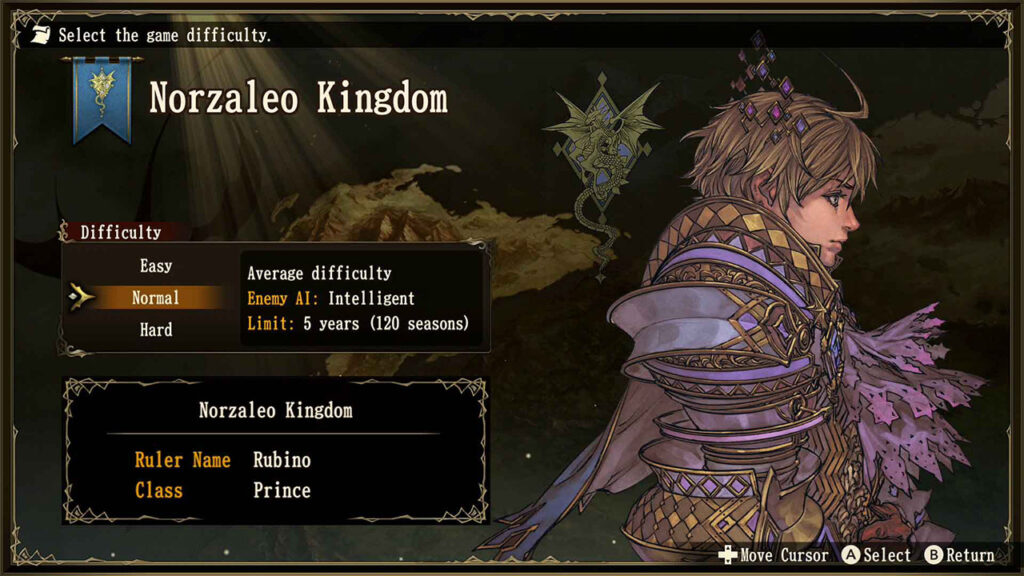
The premise of The Legend of Runersia revolves around a continent with rich Mana deposits. The land is home to five magical kingdoms, and sixth one who have no magic of their own. These factions enter into a power-struggle to take over the land and control the flow of Mana; he who controls the Mana, controls the world.
Choosing a kingdom at the start determines the story for the rest of the game, compounded with each realm having its own perks. Each ruler comes with their own starting resources, with some starting with more commanders, some starting with more access to more Mana, and some having more units to work with.
Constantly, The Legend of Runersia throws choices that will affect the flow of battle in big ways. Every territory to conquer will always have openings that might leave a critical weak point for a platoon stationed there.
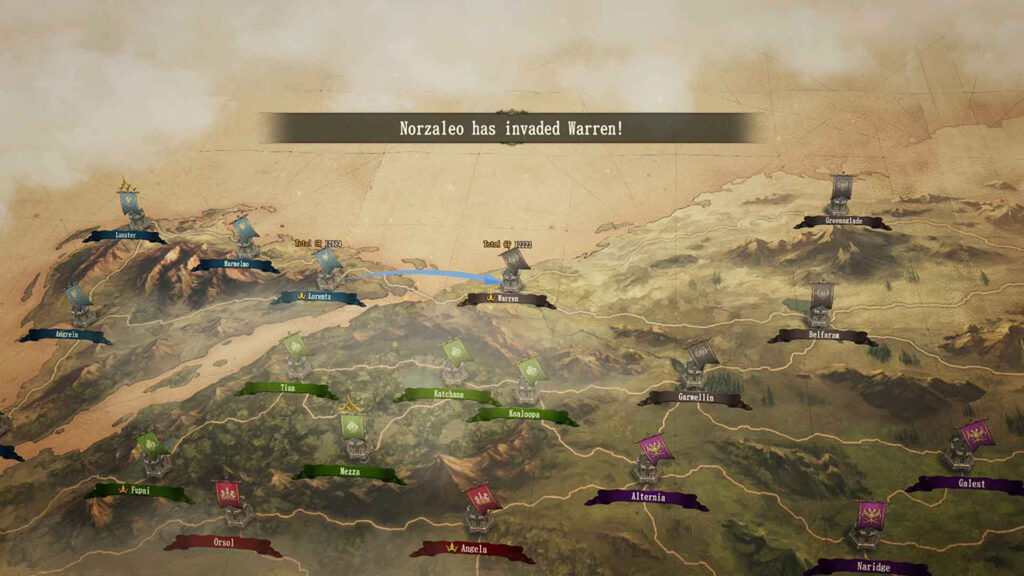
It is on the player to be able to fortify and secure everything and anything, or else one of the opposing kingdoms might make your recent acquisition theirs. Controlling Runersia becomes an incredibly tense tug-of-war with the land, and time is short.
Preparation before battle is roughly half of Brigandine: The Legend of Runersia. This phase will feel more like playing the role of middle management than a commander, since it can devolve into an hour of browsing through menus, moving characters, spending points, and just general planning ahead.
Units will have to be moved around on the big map and either be sent to battle, or to fortify other kingdoms or outposts. This is where the battle slice of Brigandine begins and is where battles are physically fought.
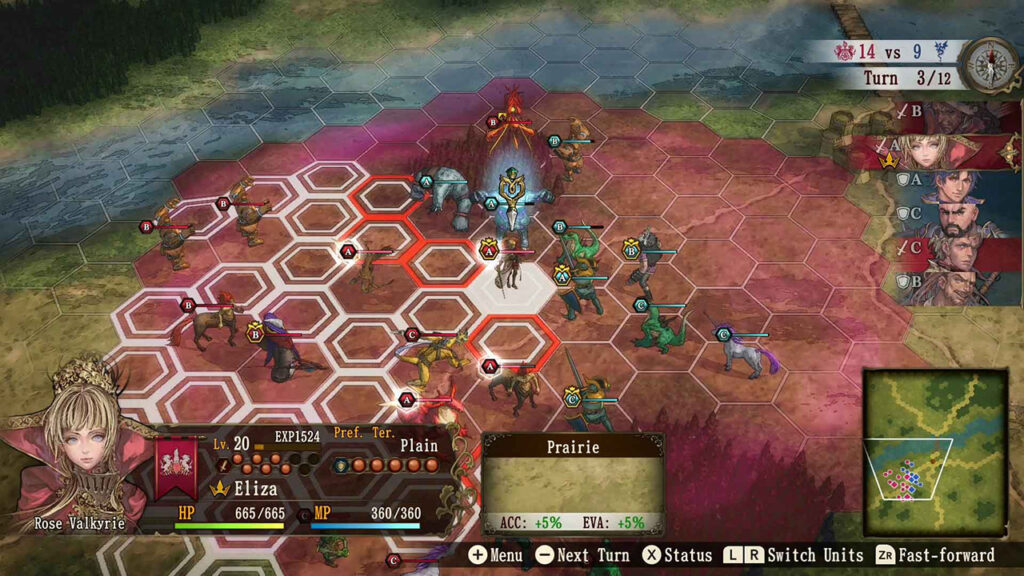
The preparation phase is not the only dense aspect of The Legend of Runersia, the turn-based hexagonal combat is equally inundated with stats and variables. The strength and power-levels of individual units won’t always mean victory, since battles can easily turn against your favor.
Terrain is a variable that can turn the tables on even the most buff commanders if they are not prepared for it. Other times, units can simply be overwhelmed by sheer numbers of smaller units who are buffed and take advantage of territorial hex-bonuses.
Enemy artificial intelligence also proves to be sneaky and diabolical, even on easier settings. Playing defensively won’t be effective, since enemies can’t be baited into situations where players can gang up on a scout.

With how rigid enemies behave, there is little way of flexible strategies other than just being prepared for the situation and having enough mana reserves to overwhelm invaders with magic. The best strategy ultimately revolves around summoning monsters and powering them up.
Every unit can change its class and become more powerful so long as enough mana has been accumulated. Trying to make sense of the interface is the only real challenge when preparing, because of the absurd amount of menus and menus within menus.
Between the pages upon pages of tabs with stats, different skills, magics, and abilities; your eyes will begin to glaze over from the endless spreadsheets of information. The driving militaristic snare drum beat of the operatic music only further emphasizes the clockwork intricacies of these systems, making you feel as machine-like as possible.
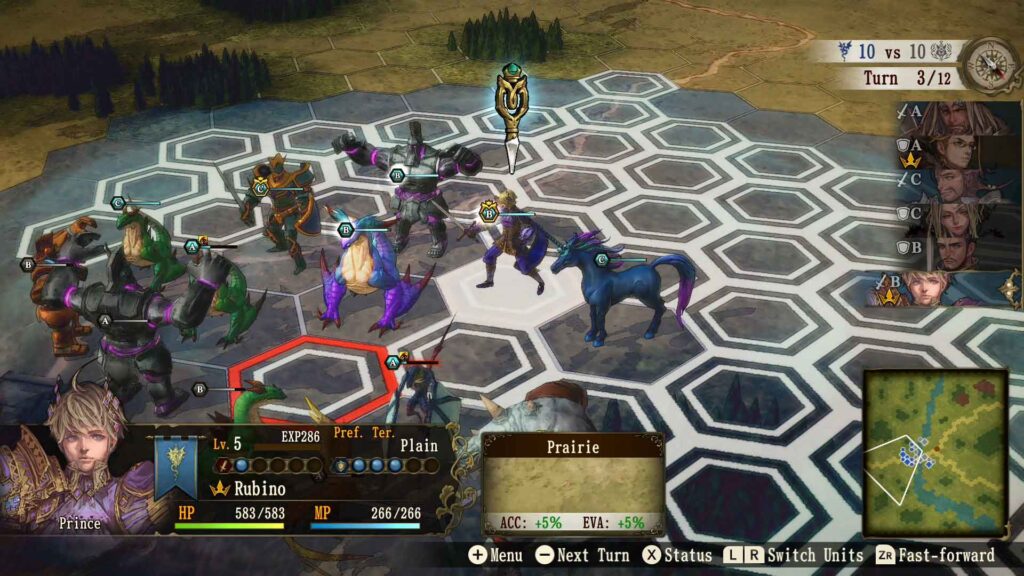
The barrier of entry for Brigandine: The Legend of Runersia is high enough that it will only appeal to fans of the original or of the Command & Conquer series. The constant fiddling around in menus and dry presentation does not inspire much excitement.
Battles must be completed in a very few amount of turns. The arbitrary limits only further restrict any defensive strategies that might become possible when successfully baiting enemy units. There just is not enough time to formulate long cons.
Even the war at large must be completed by a certain time, or else it is lost. The constant pressure of time is an admittedly stressful element, putting players on their toes to ideally play more boldly. Instead, it only frustrates.
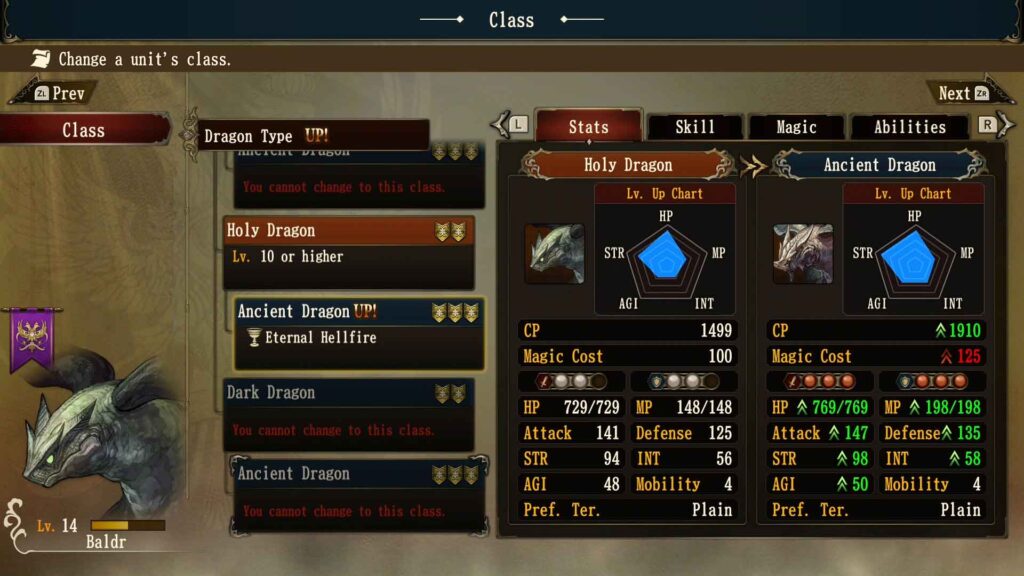
Brigandine: The Legend of Runersiais an extremely hardcore and difficult to get into strategy RPG. The story revolves around a Game of Thrones style of fantasy political intrigue, full of back-stabbings and rivaling factions vying for power.
The art and illustrations are the high points of the experience, with some being animated like a motion-comic. The imagery is highly detailed and masterfully designed, only for the European fantasy aesthetics to be undermined by an all Japanese voice cast which feels out of place.
The high-level gameplay will appeal to a specific crowd. This is not something for the average console JRPG gamer at all, and is something that would interest older PC users who prefer western strategy games
Brigandine: The Legend of Runersia was reviewed on Nintendo Switch using a review copy provided by the publisher. You can find additional information about Niche Gamer’s review/ethics policy here.